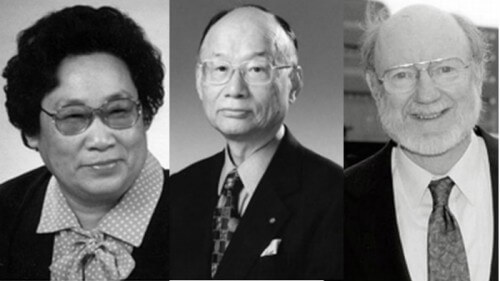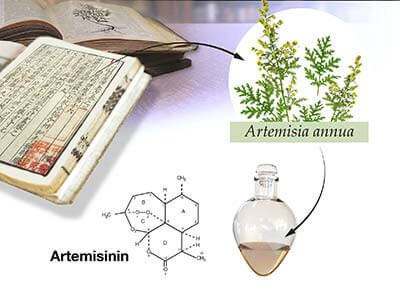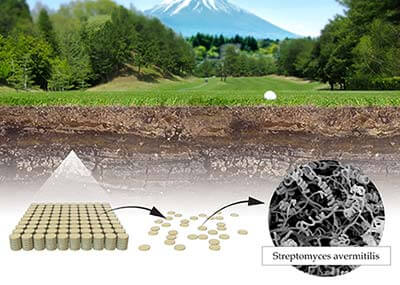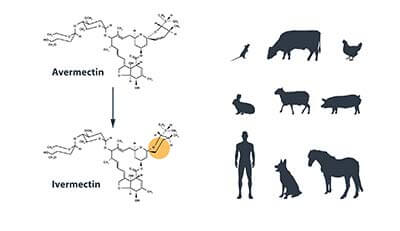Following the winning of drug developers that improve the chances of survival from severe tropical diseases

The Nobel Prize in Medicine will be awarded this year to three researchers in the field of parasitology for the development of drugs against parasites. Prof. Youyou Tu from China will receive half of the prize for the development of the drug artemisinin for the treatment of malaria. Prof. William Campbell (Campbell), an Irishman working in the USA, and Prof. Satoshi Omura (Omura) from Japan will share the other half on the development of the drug Ivermectin - a drug against worms that cause many diseases.
blood and sweat
Malaria disease (in Hebrew it was previously called fever or swamp fever) is caused by a single-celled parasite, plasmodium, which is introduced into our bodies by mosquito bites. The parasite penetrates the body into the red blood cells, and eventually explodes them, causing a serious illness. The red cells containing plasmodium adhere to the blood vessel wall to make it difficult for the immune system to destroy them, and therefore sometimes cause blockages in the blood vessels. These blockages, along with the damage to the oxygen supply to the tissues due to the destruction of the blood cells and the damage caused by the toxins of the parasite - all these make malaria a very serious disease, which still kills hundreds of thousands (and according to some data up to a million) people every year, most of them in the third world - mainly in Africa and in Southeast Asia.
For many years, almost the only treatment against malaria was quinine. The medicine extracted from the bark of trees was discovered as early as the 17th century, and was used to treat the disease with limited success until the middle of the 20th century, when it was replaced by other derivatives of the substance, which have fewer side effects. The mechanism of action of quinine and its derivatives is not entirely clear - it is estimated that these substances prevent the parasites from removing from them a substance known as heme - this is the iron-bearing component of hemoglobin, and in high concentrations it is toxic and causes the death of the parasite. However, as the use of the new derivatives of quinine expanded, the parasites were able to quickly develop resistance against it, and the effectiveness of the treatment decreased.
Poverty and rewards

Yuyu Tu (Tu) was born in December 1930 in Ningbo in eastern China, and studied medicine and pharmacology at Beijing University. Later she also specialized in traditional Chinese medicine. She worked for years at the Chinese Academy of Medicine, but only in 1980 (at the age of 50) did she receive a research position and only in 2001 was she qualified to guide research students. In 1969, Tu was appointed to lead a Chinese military project to search for new drugs for malaria. She and her colleagues turned to ancient Chinese writings, in search of sources of natural substances effective against the disease. Tu and her team produced extracts from hundreds of plants, and tested their effectiveness on animals sick with malaria. It soon became clear that a good candidate would be the Artemisia plant - the substances extracted from it were quite effective, but the results of the experiments were not consistent. Tu returned to the ancient writings in search of clues for a more effective production of the active substance from the plant known in Chinese as qīnghāo, and known for hundreds of years as effective against malaria. She was helped by advice that is more than two thousand years old to soak the plant in large quantities of cold water, and eventually, in the early 70s, she was able to isolate the active substance, which was named Artemisinin. She continued to test the substance and look for effective forms of it, and in 1979 she published her findings in a Chinese medical journal. The new development was initially received with skepticism, but soon the effectiveness of the substance was proven and gradually several medicines were developed from it. Artemisinin is used successfully in the treatment of malaria, and has saved the lives of many patients, however, the World Health Organization recommends not using the substance alone, but with other drugs, for fear of the rapid development of resistance to it as well.
Tu was not satisfied with the production of the material, but also studied its mechanism of action. It is estimated that its effectiveness against malaria lies in the fact that it contains a "bridge" - a link between two oxygen atoms. In the presence of a high concentration of iron, as is the case in the parasite's cells, which, as mentioned, accumulate molecules (heme), the oxygen bridge breaks down, and the free oxygen atoms that are released in the process, harm the parasite and contribute to its disintegration. In recent years, the effectiveness of artemisinin has also been tested against cancer, because the cells of many tumors also contain high concentrations of iron.
Despite the recognition she received from the scientific and medical community, and despite the fact that she won many awards in the field, Tu lived in great poverty. A journalist who interviewed her a few years ago in her home, in a slum in Beijing, said that the only electrical appliance in the tiny apartment is a refrigerator, which is used to store the medicinal plants she is researching. Perhaps now, winning the most prestigious prize of all will improve the financial situation of the 85-year-old researcher.
Worms and bacteria

Parasitology is defined as the study of diseases caused by parasites - creatures that are not viruses, bacteria or fungi. There are many parasites that are single-celled creatures, such as the malaria parasite mentioned above, or the parasite that causes sleeping sickness. However, there are also multicellular parasites, among them the parasitic worms. These worms, also called helminths, are a whole group of worms - usually tiny - that exist inside the human body. Some of the worms are transmitted by insect bites, mainly flies and mosquitoes - and cause serious diseases. Two of the most well-known diseases are river blindness, a disease in which the worms burrow into the skin near the eye and create a severe infection, which can cause blindness, and elephantiasis, in which the worms damage the immune system, and the resulting infections cause enormous swelling of various organs, especially the legs. The diseases caused by the worms have very limited drug treatments, and there is no effective vaccine against them. One of the breakthrough treatments was achieved thanks to Satoshi Omura, a Japanese microbiologist who specializes in isolating different substances from bacteria. Omura was born in 1935 in Yamanashi, Japan, and at the age of 35 he had already completed two doctorates - in pharmacology and chemistry - at the University of Tokyo. He was appointed a researcher at the Kitasato Institute in Tokyo (and later its president), and developed groundbreaking methods for isolating bacteria - mainly from soil - for growing them on a large scale in the laboratory and producing the various substances they produce. Omura discovered more than 470 unknown substances, including dozens of substances isolated from Streptomyces mold-like bacteria, which he believed had potential for various medical uses. The materials isolated by Omura fell right into the hands of William Cecil Campbell (Campbell), a researcher at the American branch of the giant pharmaceutical corporation Merck.
nerve-wracking

Campbell was born in 1930 in Ramleton, Ireland, and after completing a bachelor's degree in Dublin, he completed a doctorate at the American University of Wisconsin. In his work at the pharmaceutical company, Campbell was looking for effective substances against parasites of farm animals. He tested substances isolated by Omura, and it soon became clear that one of them was quite effective in killing the young worms, in their first stages of development. The most promising substance was a product of the bacterium Streptomyces avermitilis, so it was named after him Avermectin. Later, Campbell developed an even more effective derivative of the substance, and it is called - Ivermectin. The substance is a neurotoxin, which disrupts the activity of chlorine channels that help conduct an electrical signal in the nerve. Its great advantage - it damages the canals that exist only in the nerves of invertebrates, such as insects, mites and of course the parasitic worms. The marketing of ivermectin as a drug began in 1981, and soon it became a leading drug in the treatment of a long series of infections - chiefly the worm diseases - as well as an important veterinary drug. To date, no effective drug has been developed for these diseases than ivermectin, and it is included in the list of essential basic drugs of the World Health Organization.
The wisdom of evolution
Ivermectin and artesinin greatly improved the survival chances of malaria and worm disease patients, and saved the lives of millions of people, mainly in the third world. However, the widespread use of drugs derived from plants and bacteria also teaches us about the tremendous power of evolution, which developed drugs for many diseases long before us. Sometimes the trick is not to invent something completely new, but to know who to learn from or at least where to look for the solution to the problem. Also, the fact that the Nobel Prize was awarded for the development of drugs for diseases that exist mainly in the third world, may direct the research spotlight to the plight of the countries in these regions, and perhaps help improve the fragile health infrastructures there.
More of the topic in Hayadan:
